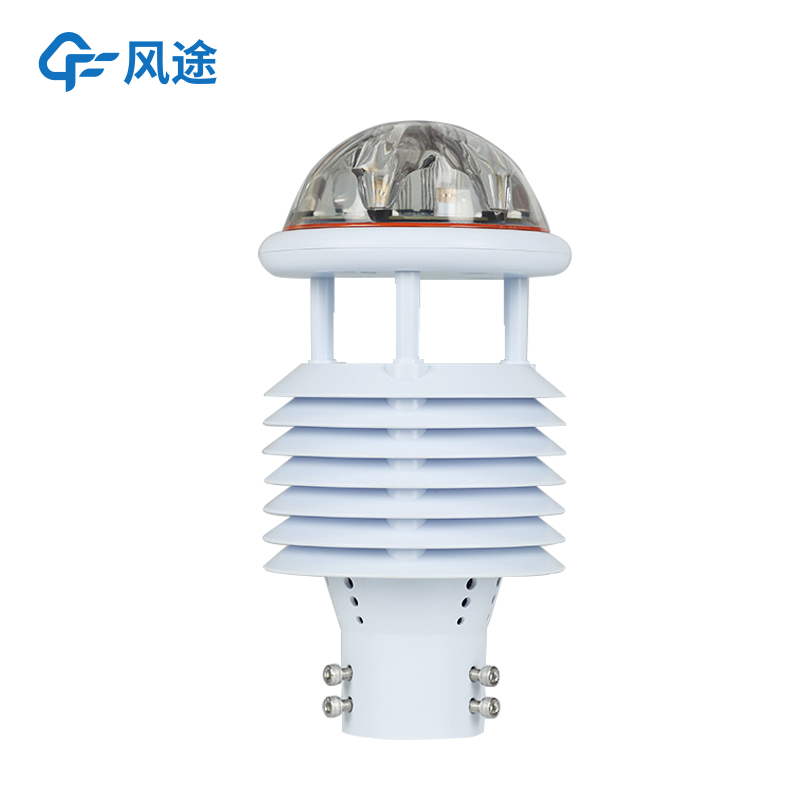Shandong Fengtu IOT Technology Co., Ltd
Sales Manager:Ms. Emily Wang
Cel,Whatsapp,Wechat:+86 15898932201
Email:info@fengtutec.com
Add:No. 155 Optoelectronic Industry Accelerator, Gaoxin District, Weifang, Shandong, China

Sales Manager:Ms. Emily Wang
Cel,Whatsapp,Wechat:+86 15898932201
Email:info@fengtutec.com
Add:No. 155 Optoelectronic Industry Accelerator, Gaoxin District, Weifang, Shandong, China
time:2025-01-06 09:24:26 source:Weather Station viewed:299 time
All-in-One Weather Sensors are sensors that have gradually become popular in recent years.
It has a high level of integration, which can be regarded as a major highlight. It integrates the monitoring functions of six key meteorological parameters, namely ambient temperature, relative humidity, wind speed, wind direction, atmospheric pressure and optical rainfall, into one, realizing the function of "one sensor for multiple uses". Take small automatic weather stations as an example. In the past, multiple independent traditional sensors such as temperature sensors, hygrometers, anemometers, barometers and rain gauges needed to be installed separately at different positions. They not only occupied a large amount of space but also required the laying of complicated wires to connect them with data acquisition equipment. However, after the appearance of All-in-One Weather Sensors, only this one sensor needs to be fixed at a suitable point, and it can easily connect to the data acquisition equipment through a single interface, reducing the wiring cost and the risk of problems caused by line failures, making the entire meteorological monitoring system simpler and more efficient.
Nevertheless, in terms of cost, although there are many aspects where it can save costs, there are also some factors that lead to an increase in cost. On the one hand, from the perspective of the purchase price, due to its integration of high-end and complex technologies, the research and development and manufacturing costs are relatively high. Reflected in the selling price, compared with some simple individual traditional meteorological sensors, the initial capital investment for purchasing an All-in-One Weather Sensors is indeed higher. Moreover, once this sensor malfunctions, the troubleshooting and repair may involve the inspection and repair of multiple functional modules. It is not as straightforward and simple as the repair of a single traditional sensor when it fails, which undoubtedly increases the technical difficulty and cost of maintenance. In addition, because of its technical precision, the requirements for calibration equipment and professional personnel are also higher, and the time and cost required for calibration will also increase compared with ordinary individual sensors.
To sum up, All-in-One Weather Sensors have outstanding advantages in integration, but also face some challenges in cost control. Users need to comprehensively consider its pros and cons.

Visibility is a crucial factor in our daily lives and the operations of numerous industries. Weather conditions such as heavy fog and sandstorms can significantly reduce visibility, causing serious impacts on transportation and travel, and are highly likely to trigger traffic accidents. In the aviat...
Large-field agriculture is a production method that involves crop cultivation on large areas of farmland, mainly including the large-scale planting of food crops, oil crops and cash crops. For example, a large area of the Northeast Plain in China is planted with corn, soybeans and so on. Its product...
A rain gauge is an important device used to measure precipitation. With the continuous advancement of science and technology, the types of rain gauges have become increasingly diverse, among which the piezoelectric rain gauge has emerged as a "new favorite" in the market in recent years. B...
In the pest control work of parks, farmlands, orchards and other places, the Air Suction Insecticide Lamp, a green and environmentally friendly device that combines solar power supply and physical prevention and control technologies, is becoming increasingly prominent. Its core principle is to effic...